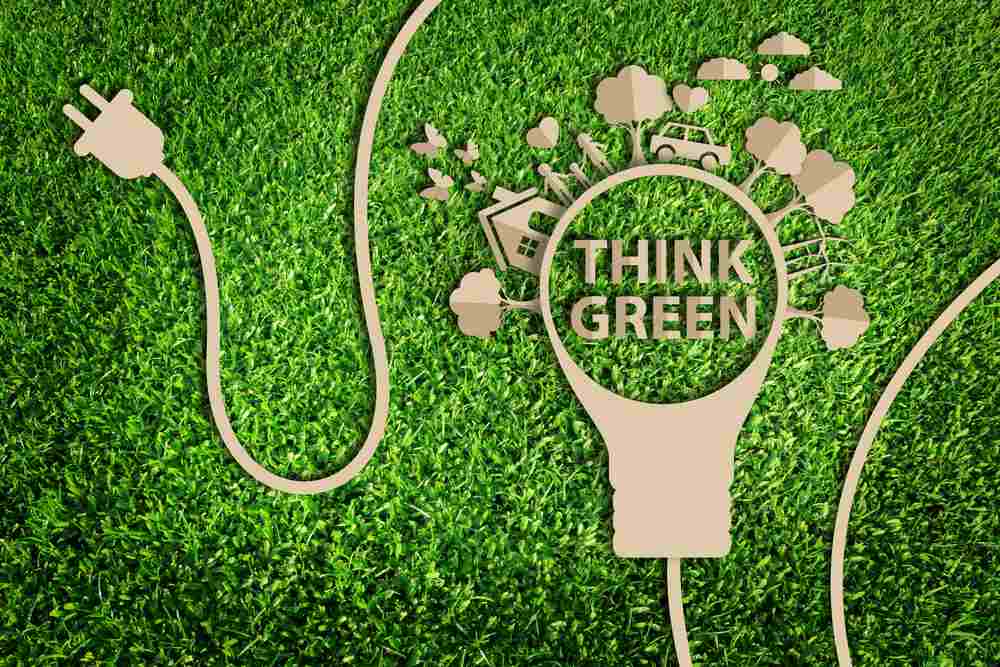
Going for the Green
Life is all about second chances, giving way to improvements and accepting change even if there is an element of fear.
No one knows what the future holds and in what direction one should go. However, the unknown can be exciting and challenging, even a little unexpected.
Where would we be if no one took that next step? We might never have discovered solar panels. Among all the benefits of solar panels, the most important is that solar energy is a truly renewable energy source.
Renewable energy, often referred to as clean energy, comes from natural sources or processes that are constantly replenished. While renewable energy is often thought of as a new technology, harnessing nature’s power has long been used for heating, transportation, lighting, and more. But over the past 500 years or so, we have increasingly turned to cheaper, dirtier energy sources such as coal and fracked gas.
Now that we have increasingly innovative and less-expensive ways to capture and retain wind and solar energy, renewables are becoming a more important power source, accounting for more than one-eighth of U.S. generation. The expansion in renewables is also happening at scales large and small, from rooftop solar panels on homes that can sell power back to the grid to giant offshore wind farms. Even some entire rural communities rely on renewable energy for heating and lighting.

Fun Fact: The total land surface area of our Earth is about 57,308,738 square miles, of which about 33% is desert and about 24% is mountainous. Subtracting this leaves 24,642,757 square miles or 15.77 billion acres of habitable land.
We need to keep our land sustainable for us and for future generations. There is only one earth, one home. Let’s do what we can while we can. Once we are gone, the problems remain for those left behind.
One type of thinking that has gained speed in this time of climate change is going green. "Going Green" means to pursue knowledge and practices that lead to more environmentally friendly and ecologically responsible decisions and lifestyles. These, in turn, help to protect the environment and sustain its natural resources for current and future generations.
Besides solar energy, there are other renewable types of energy. They include:
- Biomass energy (the chemical energy released from burning crops can generate electricity with a steam turbine).
- Geothermal energy
- Geothermal heat pumps
- Hydroelectric power
- Ocean, and
- Wind energy
Renewable energy can also be quite profitable. How, do you ask? You can sell the energy you collect! Read below...
Wind and solar energy–powered homes can either stand alone or get connected to the larger electrical grid, as supplied by their power provider. Electric utilities in most states allow homeowners to only pay the difference between the grid-supplied electricity consumed and what they have produced—a process called net metering. If you make more electricity than you use, your provider may pay you retail price for that power!
Doesn’t this sound exciting!
Going Green isn’t limited to renewable energy but also includes renewable food and material sources. The most basic is a garden. Starting a garden is one of the most rewarding things you can do. Plant fragrant florals or start a vegetable garden (or both!), and everyone can benefit from getting their hands a little dirty. But if you're new to gardening, it can be difficult to know where to start. Still, it doesn't have to be complicated; when you break your project down into manageable steps, you can ease into gardening at your own pace. And soon you'll see the rewards of your efforts with beautiful views, delicious flavors, and colorful blooms.
Just like anything else, planning is the key to a successful garden. Among the steps to include are:
- Consider what to plant;
- Pick the correct spot;
- Clear the ground;
- Improve the soil;
- Work the soil;
- Pick your plants;
- Start planting;
- Water your plants;
- Protect your garden with mulch; and finally
- How to protect your garden.
Living in the city versus the country does present its challenges to bringing a garden to life. But, it is not impossible. A roof garden is a garden on the roof of a building. Besides the decorative benefit, roof plantings provide food, temperature control, hydrological benefits, architectural enhancement, and habitats for wildlife and recreational opportunities. The practice of cultivating food on the rooftop of buildings is sometimes referred to as rooftop farming. Rooftop farming is usually done using green roof, hydroponics, aeroponics or air-dynaponics systems or container gardens.
The final products from your garden go into a few of your favorite foods. How about fresh garden lettuce on your favorite veggie or meat burger or what about some fresh pressed lime on avocado custard with whipped egg whites?
They all sound and look delicious! Pack up your favorite and healthy foods in your one-of-a kind insulated tote from T|W Tote. Our totes are made from sustainable material, reducing the waste that we, humans, leave on the planet. The average person uses nearly one pound of worth of plastic sandwich bags a year. That is the equivalent of 540 baggies per year per person that are only used once.
While we highlight the beauty of our totes, we also want to highlight the sustainability of our totes. You can easily place your sandwich in a napkin or small glass container and put it right in the tote. No need for a plastic bag!
...Just something to consider.


Leave a comment
This site is protected by hCaptcha and the hCaptcha Privacy Policy and Terms of Service apply.